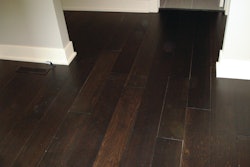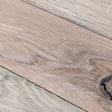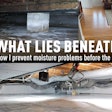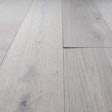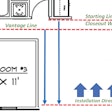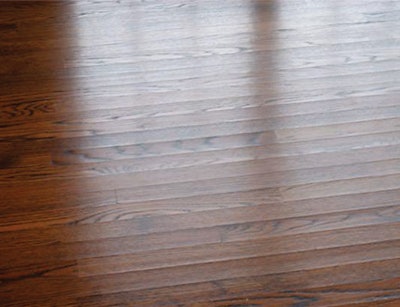

The Problem
I was contracted to inspect newly installed, sanded and finished red oak flooring. The flooring cupped shortly after the project was completed.
What Happened
The home in northern Illinois had existing solid 21⁄4 strip flooring. The new flooring was nailed onto an OSB subfloor over a basement and laced into the old flooring. All of the flooring was sanded and finished at the same time in late March. Approximately six weeks after the flooring was finished, the homeowners noticed cupping in only the new flooring, not the existing oak flooring.
The Inspection
At the time of my inspection, the flooring had been in place for a year. When I arrived, I observed that the landscaping was correctly graded away from the foundation. Upon entering the home, I could see approximately 50 percent of the flooring was cupping. Using a straightedge and a feeler gauge, I found the cupping ranged from 0.009–0.015 inches. Moisture meter readings ranged from 6.7–7.3% MC on the tops of the boards and 9.2–9.6% MC in the subfloor in both cupped and uncupped areas. During my inspection the home's RH was 34% with a temperature of 70 degrees Fahrenheit.
The installer said the wood was stored in the home for a week with the HVAC running before installation and that the flooring MC before installation was 5.5% throughout.
I determined the cupping found in the new flooring to be consistent only with incorrect acclimation before installation, sand and finishing. The flooring was installed when the MC of the flooring was below 6%, but the target EMC of wood flooring in the Chicagoland area is between 7–9%. After the flooring was installed and once the flooring acclimated to the proper EMC, the flooring expanded. Because the flooring was installed and had expanded in place, it had nowhere to go but up, which is considered acclimation cupping. This cupping did not and will not go away with the seasons. (Cupping that does go away with seasonal changes would be considered "normal" cupping.)
RELATED: How to Prevent Cupping and Worse in Summer Months
How to Fix the Floor
To correct the cupping, all of the flooring must be re-sanded and refinished. This should happen when the flooring is close to a mid-point of the MC levels it experiences throughout the year.
In the Future
Depending on the time of year, leaving flooring on a job site to acclimate can be problematic. In this case, the flooring dried to a level too low for the typical moisture levels throughout the year. Before wood flooring is installed, installers must measure the flooring MC and determine if it is acceptable for the year-round moisture levels in the home, not just the conditions at that point in time.
















